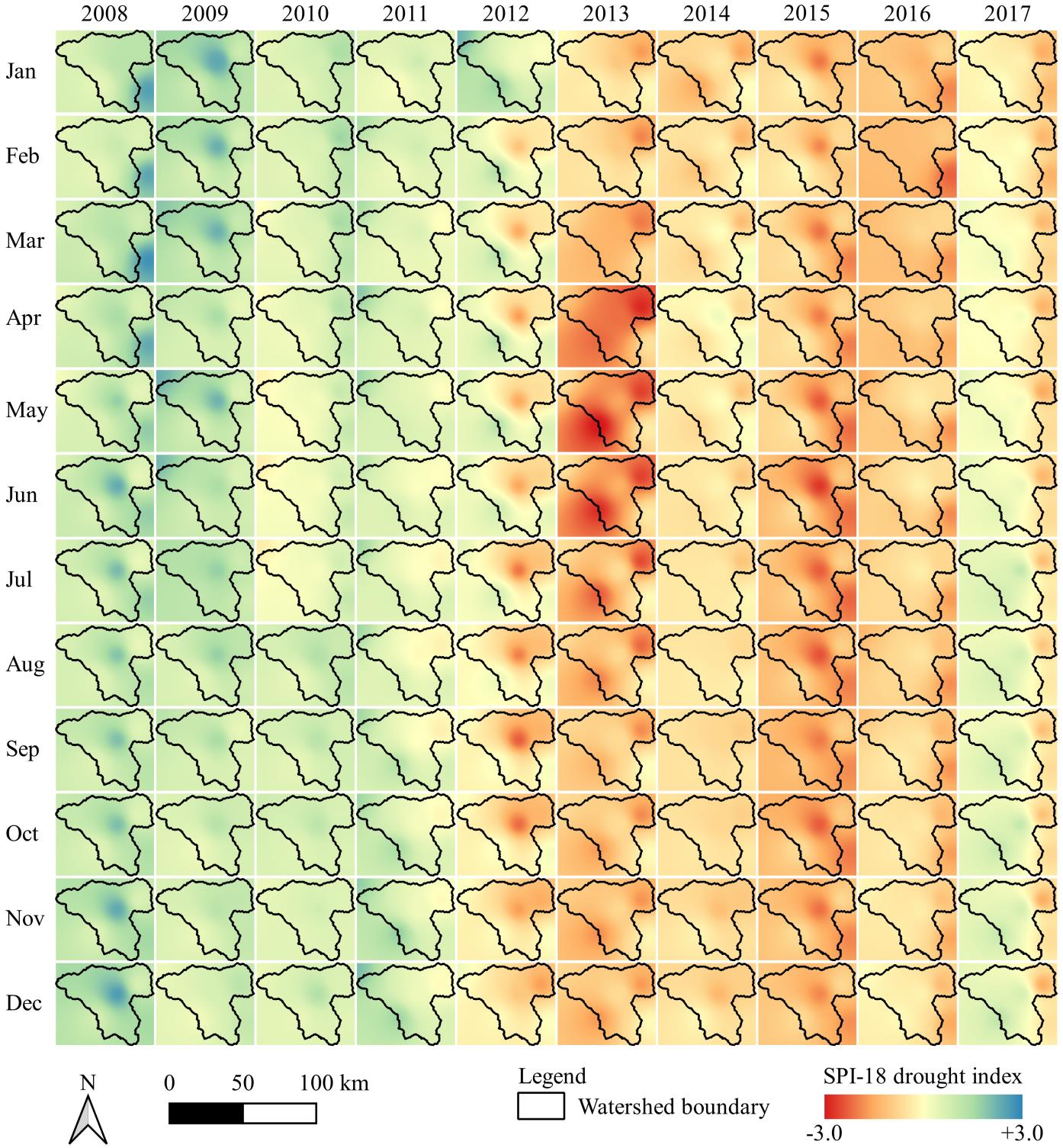Analysis of Precipitation and Streamflow Data for Drought Assessment in an Unregulated Watershed 10.32526/ennrj/19/2020202
Main Article Content
Abstract
Predicting drought occurrence accurately still remains a challenging task. To fill research gaps, this study identified and analysed meteorological and hydrological droughts using the Standardized Precipitation Index (SPI) and Streamflow Drought Index (SDI), respectively, in the upper Lam Pao watershed in Thailand. The study also focused on investigating the relationships between both droughts. The SPI and SDI were computed based on observed long-term precipitation and streamflow data during the period of 1988-2017. The drought analysis was carried out by using the R packages. The location, period and severity level of drought events were graphically presented. On the basis of trend analysis, the SPI series showed slightly increasing trends, whereas no trend was found for the SDI series. This implied that the hydrological drought was influenced by not only precipitation but also other factors. The key findings indicated that there was a positive relationship between meteorological and hydrological droughts. In addition, there was a specific lag time, which may depend on physical characteristics of a basin, in drought propagating from meteorological drought to hydrological drought. Overall, the drought indices can help to predict hydrological drought events, which could be valuable information for drought monitoring and early warning systems.
Article Details
Published articles are under the copyright of the Environment and Natural Resources Journal effective when the article is accepted for publication thus granting Environment and Natural Resources Journal all rights for the work so that both parties may be protected from the consequences of unauthorized use. Partially or totally publication of an article elsewhere is possible only after the consent from the editors.
References
Bachmair S, Stahl K, Collins K, Hannaford J, Acreman M, Svoboda M, et al. Drought indicators revisited. Wiley Interdisciplinary Reviews: Water 2016;3(4):516-36.
Barker LJ, Hannaford J, Chiverton A, Svensson C. From meteorological to hydrological drought using standardised indicators. Hydrology and Earth System Sciences 2016;20(6):2483-505.
Belayneh A, Adamowski J, Khalil B, Ozga-Zielinski B. Long-term SPI drought forecasting in the Awash River Basin in Ethiopia using wavelet neural network and wavelet support vector regression models. Journal of Hydrology 2014;508:418-29.
Blagojević B, Mihailović V, Gocić M, Trajković S. Streamflow drought index modelling through standard precipitation index assisted by service-oriented paradigm. In: Lamaddalena N, Todorovic M, Pereira LS, editors. Water, Environment and Agriculture. Valenzano, Italy: CIHEAM-IAMB; 2013. p. S9-2.
Boudad B, Sahbi H, Mansouri I. Analysis of meteorological and hydrological drought based in SPI and SDI index in the Inaouen Basin (Northern Morocco). Journal of Materials and Environmental Science 2018;9(1):219-27.
Fischer T, Gemmer M, Su B, Scholten T. Hydrological long-term dry and wet periods in the Xijiang River Basin, South China. Hydrology and Earth System Sciences 2013;17(1):135-48.
Gumus V, Algin HM. Meteorological and hydrological drought analysis of the Seyhan-Ceyhan River Basins, Turkey. Meteorological Applications 2017;24(1):62-73.
Hipel KW, McLeod AI. Time Series Modelling of Water Resources and Environmental Systems. Amsterdam, London, UK: Elsevier; 1994.
Hong X, Guo S, Zhou Y, Xiong L. Uncertainties in assessing hydrological drought using streamflow drought index for the upper Yangtze River Basin. Stochastic Environmental Research and Risk Assessment 2015;29(4):1235-47.
Karavitis CA, Alexandris S, Tsesmelis DE, Athanasopoulos G. Application of the Standardized Precipitation Index (SPI) in Greece. Water 2011;3(3):787-805.
Kendall MG. Rank Correlation Methods. London, UK: Griffin, 1970.
Lorenzo-Lacruz J, Vicente-Serrano SM, González-Hidalgo JC, López-Moreno JI, Cortesi N. Hydrological drought response to meteorological drought in the Iberian Peninsula. Climate Research 2013;58(2):117-31.
McKee TB, Doesken NJ, Kleist J. The relationship of drought frequency and duration to time scales. Proceedings of the 8th Conference on Applied Climatology; 1993 Jan 17-22; Anaheim: USA; 1993. p. 179-84.
Mishra AK, Singh VP. A review of drought concepts. Journal of Hydrology 2010;391(1-2):202-16.
Nalbantis I, Tsakiris G. Assessment of hydrological drought Revisited. Water Resources Management 2009;23(5):881-97.
Ozkaya A, Zerberg Y. A 40-Year Analysis of the Hydrological Drought Index for the Tigris Basin, Turkey. Water 2019; 11(4):657.
Palmer WC. Keeping track of crop moisture conditions, nationwide. Weatherwise 1968;21(4):156-61.
Sen PK. Estimates of the regression coefficient based on Kendall's Tau. Journal of the American Statistical Association 1968;63(324):1379.
Shafer BA, Dezman LE. Development of a surface water supply index (SWSI) to assess the severity of drought conditions in snowpack runoff areas. Proceedings of the 50th Annual Western Snow Conference; 1982 Apr 19-23; Reno: USA; 1982. p. 164-175.
Van Loon AF. Hydrological drought explained. Wiley Interdisciplinary Reviews: Water 2015;2(4):359-92.
Van Loon AF, Stahl K, Di Baldassarre G, Clark J, Rangecroft S, Wanders N, et al. Drought in a human-modified world. Hydrology and Earth System Sciences 2016;20(9):3631-50.
Wilhite DA, Svoboda MD, Hayes MJ. Monitoring drought in the United States. In: Boken VK, Cracknell AP, Heathcote RL, editors. Monitoring and Predicting Agricultural Drought. Oxford, USA: Oxford University Press; 2005. p. 121-31.

